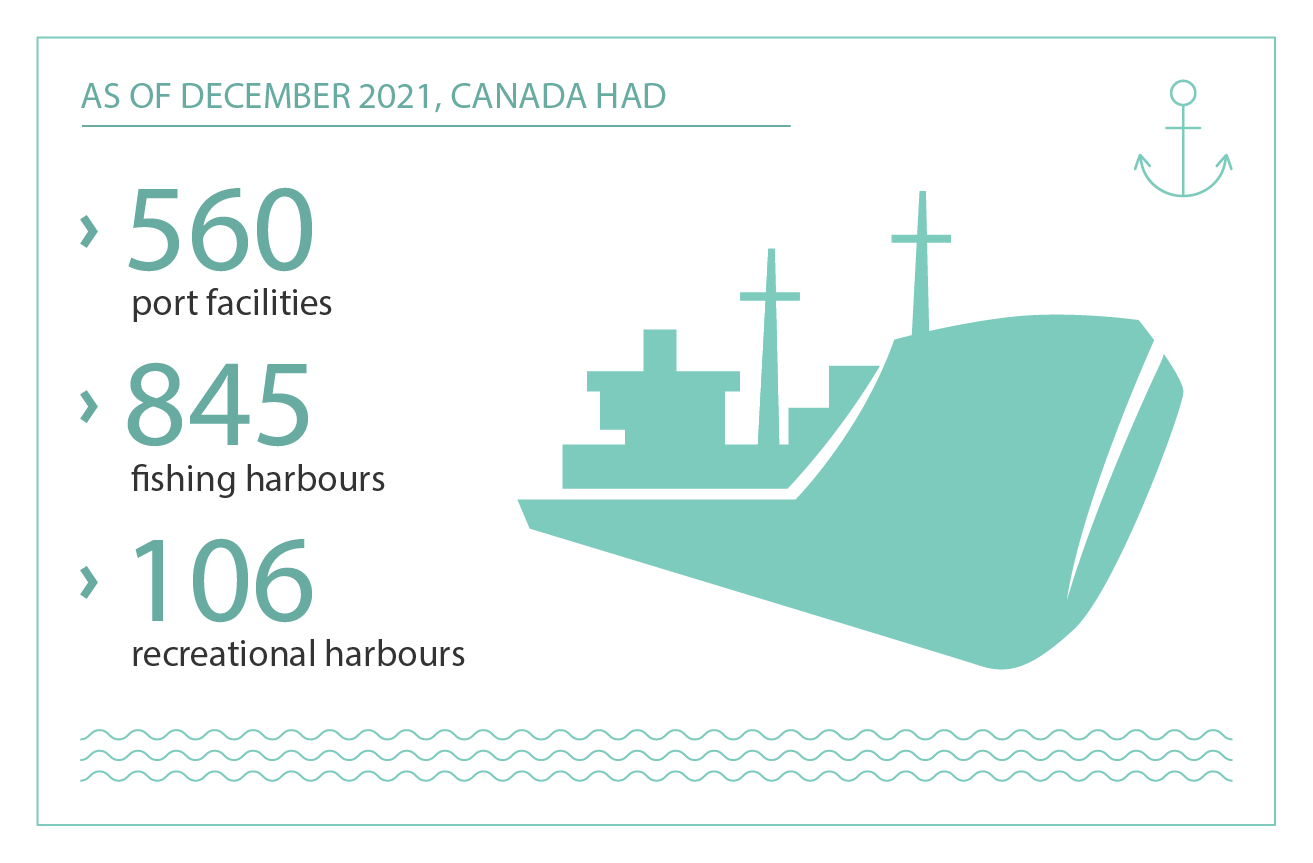Image description: Marine Network
The map of Canada shows the approximate location of the 17 CPA. Each is represented by an anchor in a blue circle. The CPA ports are (in alphabetical order): Belledune, Halifax, Hamilton-Oshawa, Montréal, Nanaimo, Port Alberni, Prince-Rupert, Québec, Saguenay, Saint John, Sept-Îles, St. John's, Thunder Bay, Toronto, Trois-Rivières, Vancouver Fraser and Windsor. Four of these ports are located in the Atlantic Provinces, five in Québec, four in Ontario and four in British Columbia.
Key traffic and volume statistics
Canadian ports allow Canadian bulk commodities to reach overseas markets, and they’re the main point of entry for imported containerized manufactured goods. Ports are also important hubs that connect Canada’s coastlines to domestic and U.S. markets where the goods are shipped by railways and trucks.
Transport Canada oversees for two types of ports:
- 17 ports that are independently managed by Canada Port Authorities
- 34 port facilities that are owned and operated by Transport Canada
Canadian registered vessels carry around 99% of domestic tonnage. Canadian vessels also support trade between Canada and the U.S. In contrast, foreign registered fleets carry goods to and from non-U.S. destinations. The domestic marine sector’s main focus is transporting bulk cargo. The sector is also key to supplying northern communities and developing offshore resources.
Image description: Marine Transportation infographic
As of December 2021, Canada had
- 560 port facilities
- 845 fishing harbours
- 106 recreational harbours
In 2020, Canada’s commercial registered fleet (made up of vessels of 1,000 gross tonnage and over) had 727 vessels, with a total of 3.7 million gross tonnes. 440 barges were the fleet’s backbone, with 28.1% of total gross tonnage and 60.5% of vessels, followed by cargo vessels (77) and workboats (63). The barges were registered on the Pacific coast.
Passenger-ferries in Canada provide a link to coastal, island and remote communities. In 2021, there were 65 registered ferries in Canada. Every year members of the Canadian Ferry Association, which includes all major ferry companies in Canada, carry more than 53 million passengers and more than 21 million vehicles.
